I’ve been using SucraSEED since 2008 on my farm in Tillamook OR. Every time my cows get onto a field with High Sugar Grasses, they go to town, and I’m not talking just the way they love to eat the stuff, it’s making a big difference in their milk yields.
Immediately after grazing an HSG field I see a 1,000# increase in milk production, that’s a 4# bonus for every one of my 250 herd. I don’t care so much about the yield claims on different varieties or species, if the cows won’t eat it, it’s meaningless. But if my cows like it – I like it. Now that they’re producing more milk – I like it even more!
Joe Jenck Jenck Farms
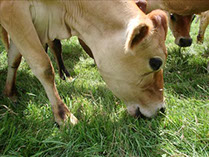
We have been planting the HSGs for several years now on our dairy. It has proven to be very persistent, productive and a cow favorite. It has even produced well during the hot months of summer. Our latest planting in a field that is usually a four feeding field has been extended to a five feeding field.
When the cows go into that field, they have been up in milk every time this grazing season. Not only are we getting an extra 12 hour graze from the field, but much more milk per acre when we graze the field. We will be planting more again this fall.
Jon Banson Double J Jerseys
Monmouth Oregon
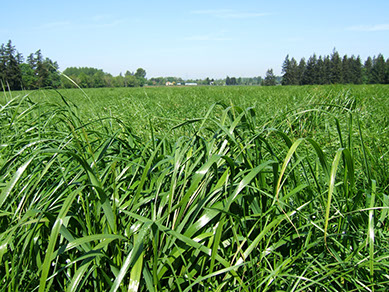
Pasture Sweet’ner grown for silage in the Willamette Valley.
Wet weather prevented cutting for a week, but still looks to be excellent feed for Volbeda Dairy in Albany Oregon.
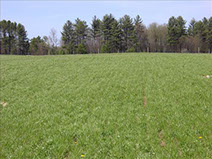
AberDart HSG has survived for three years now in the upper peninsula of Michigan! It appears that the key to winter survival is to maintain a minimum of 3 inches of stubble heading into winter and then make sure to wait a little while after Spring growth begins before grazing. It seems that the HSG varieties are one of the first grasses to start growing and as a result people turn the animals in to graze before the plant has been able to restore the carbs consumed over the winter.
“I rated the High Sugar Ryegrass stands today and looks pretty good. I was surprised to see these High Sugar Perennial Ryegrasses survived the third winter here in the UP. Amazing!”
Dr. Doo-Hong Min Michigan State University
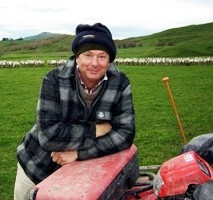
“There’s no free lunch in farming but I honestly think High Sugar Grass is the closest thing to it because for each mouthful eaten the animals get a lot more energy,” says James Aitken of Hawke’s Bay (New Zealand). He first planted High Sugar Grass last year in six hectares at the dairy farm in south-west Victoria (Australia) because there was little to lose in trying a new grass in drought-stressed paddocks. The HSG was sown in May and was not expected to survive its late planting followed by three weeks of floods and the region’s chilling winds in July but was “miraculously” ready for grazing in spring.
The farm manager had been doubtful that ‘an English grass’ would prosper in harsh Austrailian conditions but was impressed by the response of cows after their first grazing “pushing on the fence to get back in”. Scepticism turned to delight when their daily dairy factory receipts showed a substantial lift in milk yield, averaging two litres per cow, whenever the cows grazed the High Sugar Grass.
“If you can grow grass with higher feed value for the same amount of inputs and achieve almost a 10 percent jump in animal production, which seems pretty achievable, that’s getting something for nothing.” “This is a grass factory and any grass that converts more effiently into milk or meat protein is a grass that we have to grow,” says James, now considering further stocking options to take full advantage.
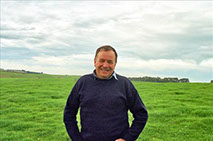
John Metherell, milking 1,000 cows this dairy season, says a winter brassica crop of 48 hectares will be regrassed with HSGs this spring and other areas as they need renewing will be sown with High Sugar Grasses. “It’s all on the back of the research done and our own experience with HSGs,” says Mr Metherell, farming in South Otago (NZ) for 35 years. “It’s easy to manage the HSG pasture and the cows like it.” HSG’s resistance to pugging and pulling and the lack of evident damage by porina caterpillar are further benefits, he says.
Mr Metherell says he first planted High Sugar Grass after reading up on the new grass and was drawn to the concept of higher sugar content enabling the cow’s rumen to more efficiently utilise grass protein and nitrogen. “It makes sense to me,” says Mr Metherell.
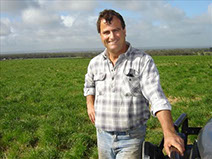
Jorge Hobi, 42, planted High Sugar Grass last Autumn. Jorge and his wife Gerda have increased their herd’s average milk yield to 600kg milksolids per cow per year while increasing the herd from 580-700 cows. In 2007 they were named joint winners in south-West Victoria in the inaugural Dairy Business of the Year Award.
Jorge has also been trialling other new ryegrasses at Heywood and in the process deduced that annual cultivars are unable to recover from the dry conditions on a farm that has no irrigation. “But with the perennial HSG I know how it is performing visually, how quickly it’s coming back (after grazing) and how much the cows like it, and from that point of view it’s awesome,” said Jorge.